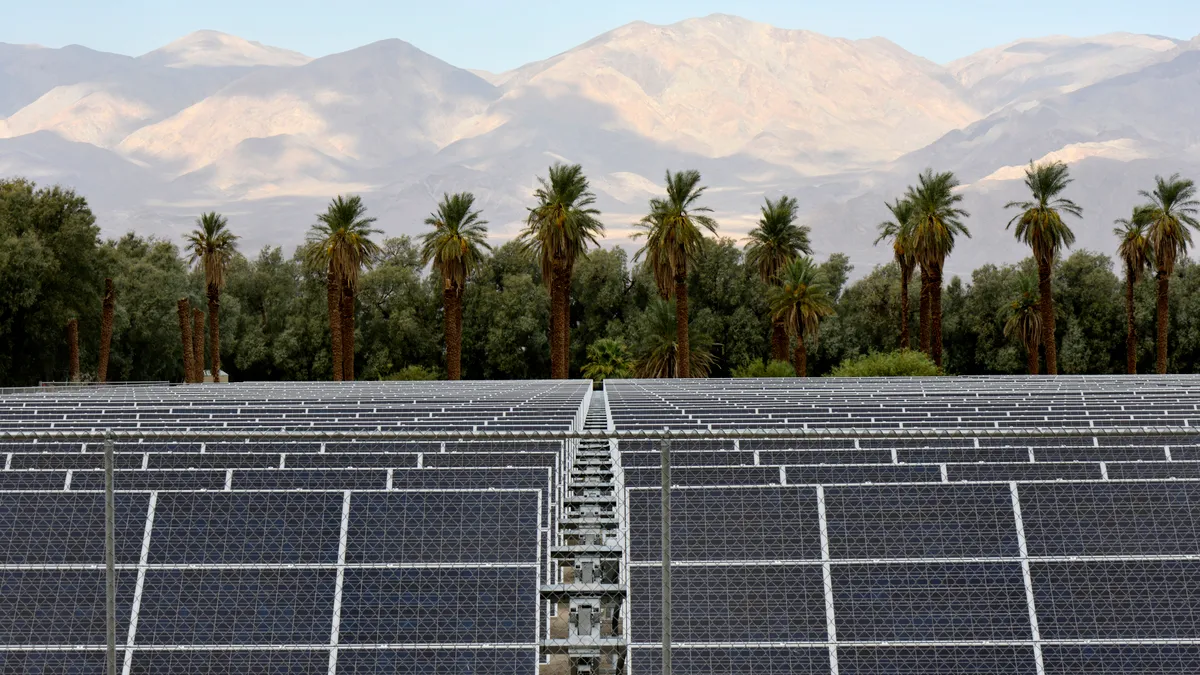Dive Brief:
-
Three community choice aggregators (CCA) in California issued $2 billion in bonds to pay upfront for about 450 MW of renewable energy over 30 years.
-
By routing bonds to purchase clean energy through the California Community Choice Financing Authority (CCCFA), the three public energy suppliers expect to save 8-12% on the cost of energy. The financial structure of the transaction will allow the CCAs to take advantage of both bulk energy discounts and the difference between taxable and tax-exempt rates, according to Garth Salisbury, director of finance and treasurer for MCE, a CCA that provides power to 37 San Francisco Bay Area communities.
-
Although bonds have been used to finance the prepayment of energy and natural gas in the past, this is the first time MCE has used this structure to purchase clean energy, Salisbury said Monday. With the first transactions now complete, he anticipates MCE will make additional purchases using the same template, which could also be used by other energy providers, he said.
Dive Insight:
Two newly issued bonds will lock in 450 MW of clean energy for 2.5 million residents and businesses in California’s Central Valley and the San Francisco Bay area thanks to an innovative pay structure that took two years to put together.
The bonds are expected to reduce renewable power costs by $7 million a year in the first five to 10 years for MCE, East Bay Community Energy and Silicon Valley Clean Energy, according to an announcement released Monday. Both bonds earned green bond designations and a climate certification indicating they comply with the 2016 Paris Agreement, Salisbury said.
The bond for power purchases by East Bay Community Energy and Silicon Valley Clean Energy, underwritten by Morgan Stanley, was issued in mid-September. The second bond for MCE’s purchase, underwritten by Goldman Sachs, closed on November 24. But both were in the works for two years due to the complexity of the transactions, some slight COVID-related delays, and the need to establish the CCCFA, which launched in April, according to Salisbury.
Under the arrangement, for-profit energy providers will use the bond funds to provide the CCAs a discount on their electricity thanks to the difference in taxable and tax-exempt rates.
In the case of MCE, the bonds will procure power from four solar projects with which MCE already had a power purchase agreement, Salisbury said. It was necessary to wait for several months to determine the farms’ average energy output before executing the 30-year repurchase contract, he said.
But for MCE, the wait was worthwhile. The contract will supply about 8% of their energy needs, while cutting costs by about 10%, saving some $3 million per year, Salisbury said.
Those savings will allow communities such as the City of Larkspur to meet their clean energy goals while maintaining competitive energy prices, according to Kevin Haroff, a member of the City of Larkspur city council and the MCE board.
"There’s a strong sense of the importance of preserving environment values in this community," Haroff said. "Our customers are committed to environmental protection and also interested in making sure the rates they pay for electricity are competitive."
The savings will help MCE fund programs to benefit the community, including a relief fund established for customers who were impacted by Covid-19, for energy efficiency programs, and a loan program to help customers install onsite battery storage.
It also established a template for future prepurchase agreements, which Salisbury said he expects will become a "regular thing" at MCE. Similar transactions could also be replicated by other nonprofit energy providers, he said.
"They’re green bonds, they’re climate certified, tax exempt—and very attractive to investors," he said.














